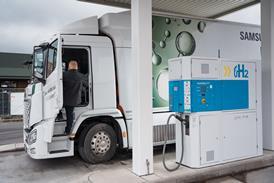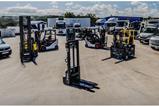Late last year, the European Parliament and Council (EC) announced a provisional agreement on the Euro VII legislation, pending formal adoption. This legislation, a part of the EU’s roadmap towards “near-zero emission vehicles by 2035” under the broader European Green Deal, encompasses cars, vans, and heavy-duty vehicles within a single legislative framework.

The agreement maintains the Euro 6 emissions limits for cars and vans but imposes stricter limits for buses and trucks. Additionally, it introduces limits for particles emitted from exhausts, brakes, and tyres, along with standards for battery durability, emphasising a holistic approach beyond engine testing.
According to the European Commission, the estimated environmental benefits of the proposed Euro VII regulations significantly outweigh the associated costs to manufacturers, consumers, and authorities. The legislation aims to raise consumer awareness and confidence in electric vehicles by introducing battery durability standards. Plug-in hybrids may also be required to operate solely on electric power when entering designated city centers.
Regarding emissions limits for Commercial Vehicles (CVs), the legislation includes a comprehensive list of pollutants, with additional restrictions on ammonia, formaldehyde, and nitrous oxide (N2O) gas emissions. Euro VII imposes stricter exhaust emission limits for heavy vehicles, retaining the Euro VI standards and requiring onboard emissions monitoring systems (OBM) for new trucks.
Moreover, the agreement introduces more stringent limits for brake and tyre emissions, aiming to promote the adoption of regenerative braking technology. Lifetime requirements for vehicles are also increased, with cars and vans expected to have a lifespan of up to 200,000km or 10 years.
Following ratification, the proposed application dates for the regulation include specific timelines for different vehicle types and components. New types of cars and vans would have 30 months for compliance, while buses, trucks, and trailers would have 48 months. Additionally, manufacturers are urged to prioritise fleet renewal and invest in zero-emission vehicles to align with emission targets.
However, the proposed Euro VII standards have faced criticism from industry stakeholders, including the European Automobile Manufacturers’ Association (ACEA). ACEA has raised concerns about the severity and feasibility of the regulations, citing challenges in funding and infrastructure support for electric vehicle technologies. It also emphasises the need for a realistic approach to ensure a smooth transition to Euro VII standards.
Infrastructure barriers have also been highlighted, with calls for the development of a dense network of Charging and refueling infrastructure to support the transition to zero-emission vehicles. Public and private initiatives are underway to address these challenges, with joint ventures like Milence investing in charging infrastructure across Europe. Overall, while the Euro VII legislation represents a significant step towards reducing emissions and promoting sustainable transportation, stakeholders stress the importance of addressing technical challenges and infrastructure needs to facilitate a successful transition.


















